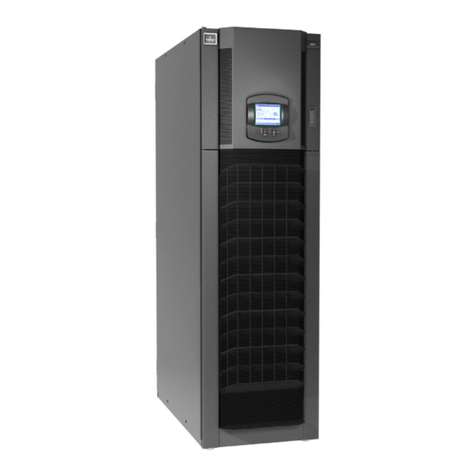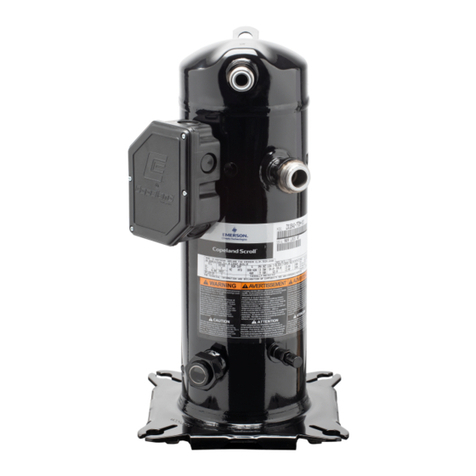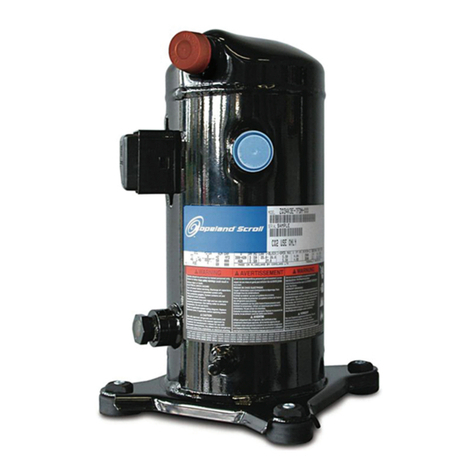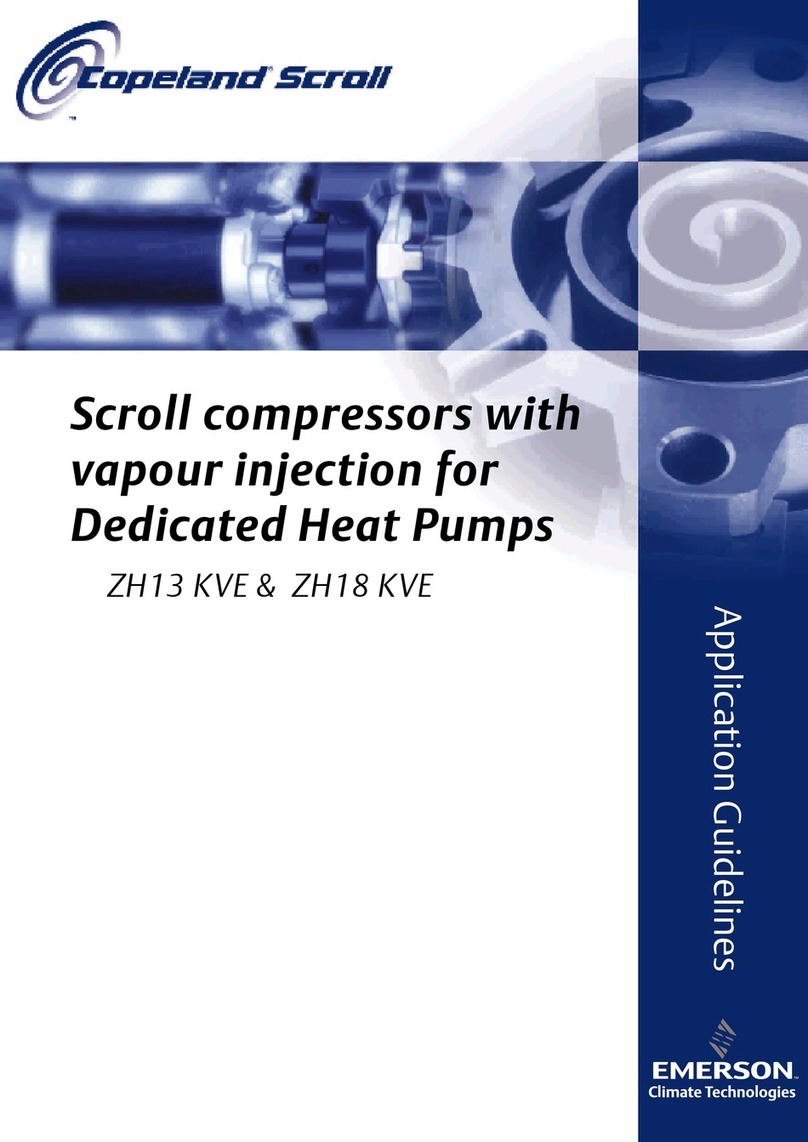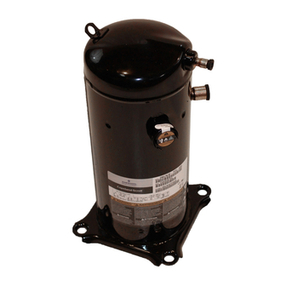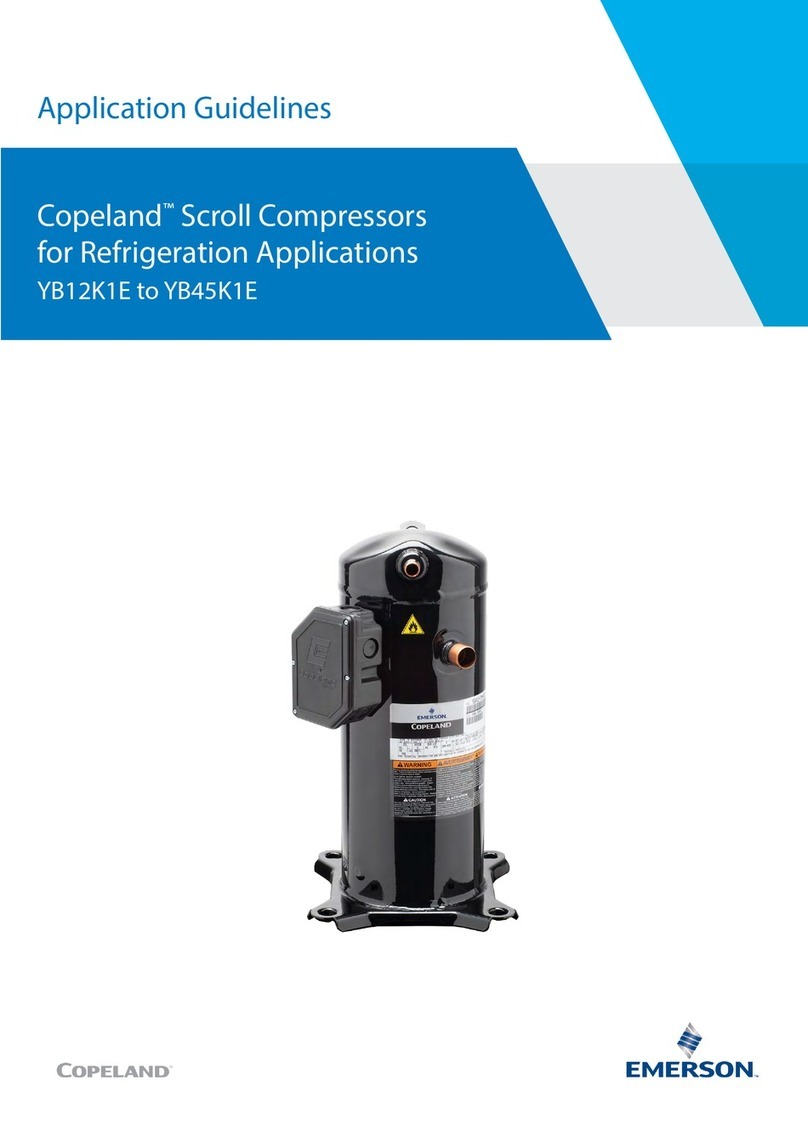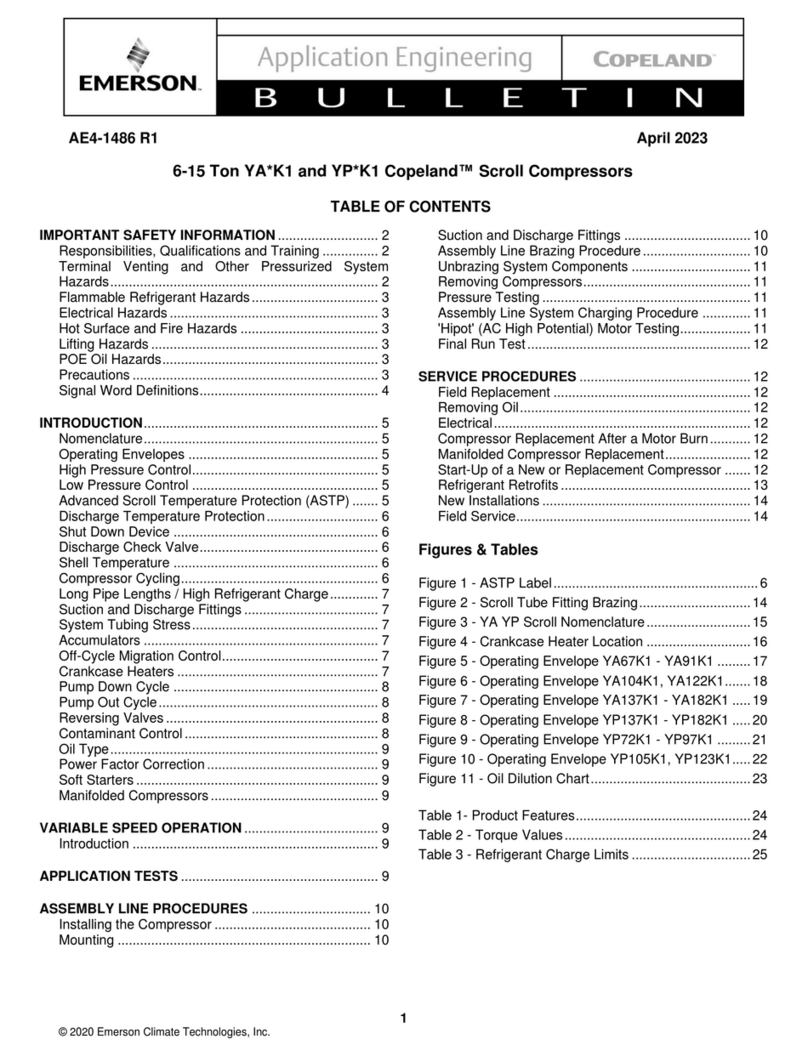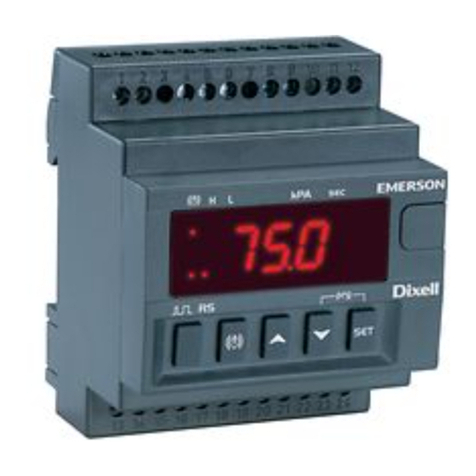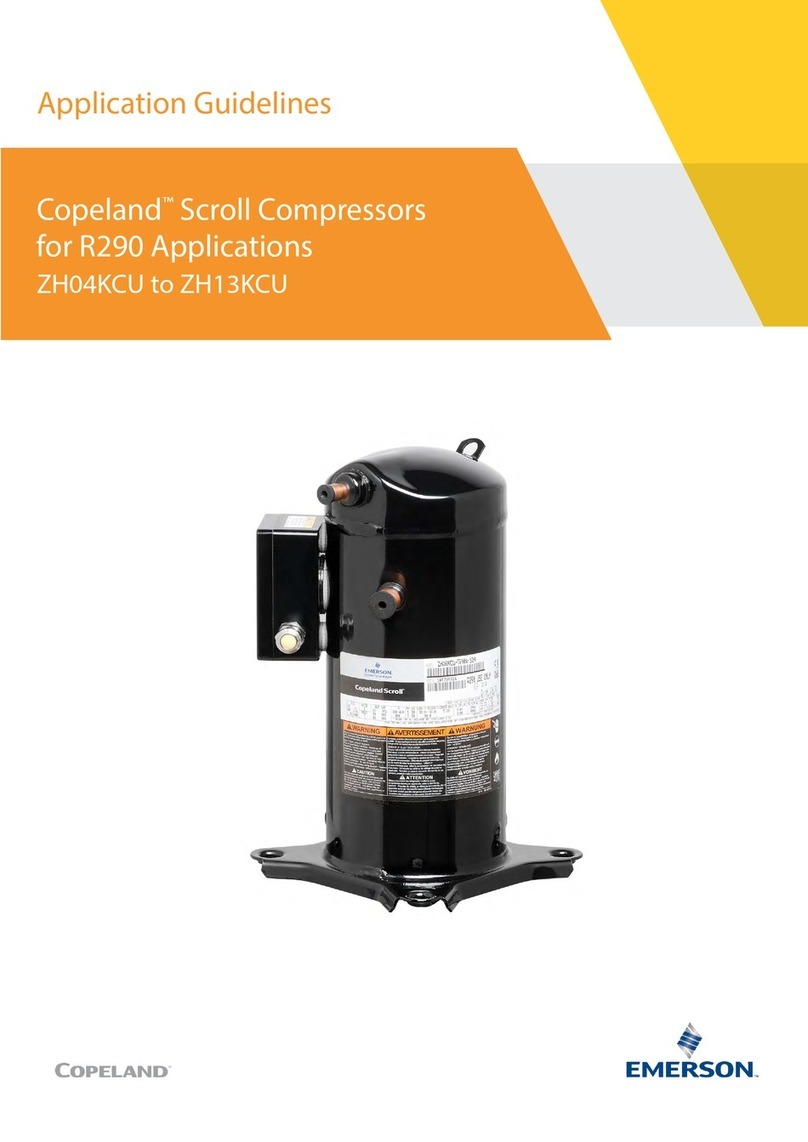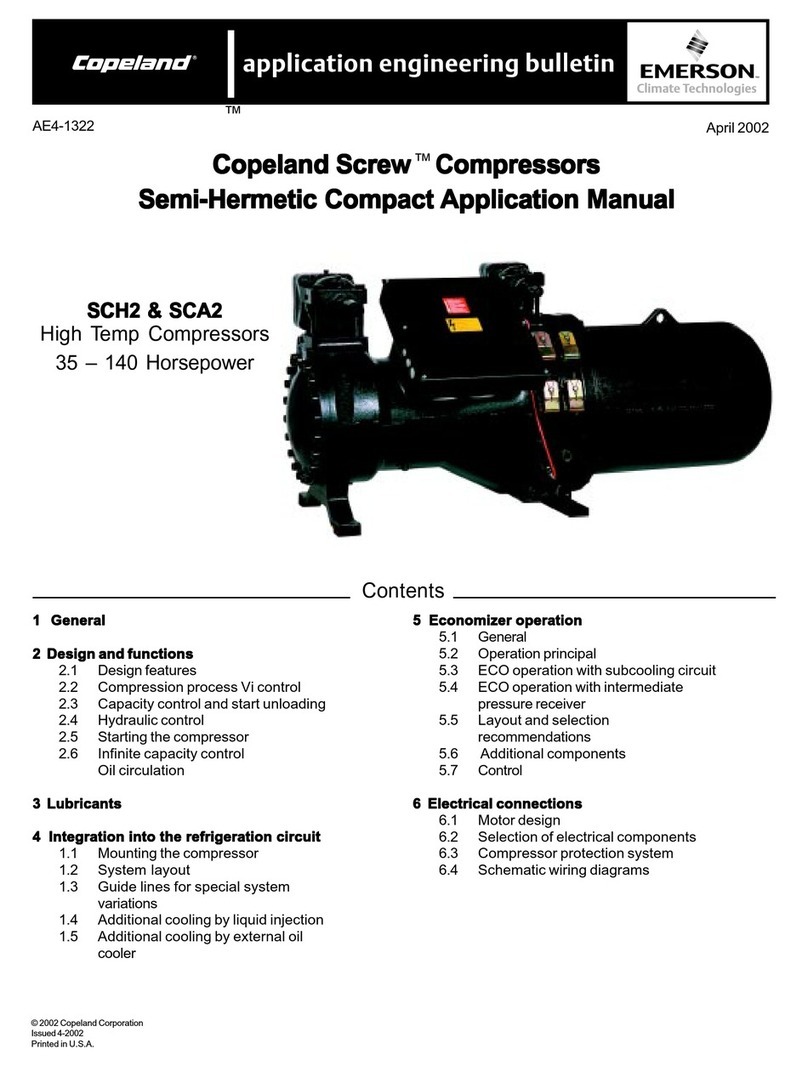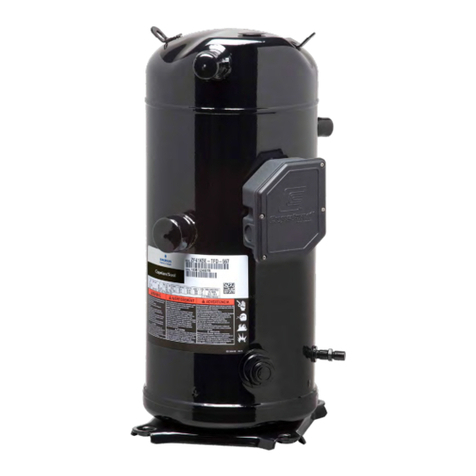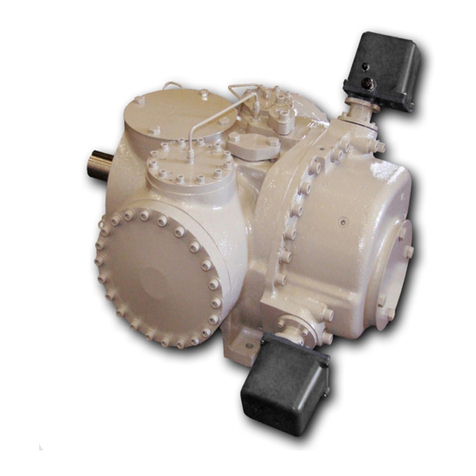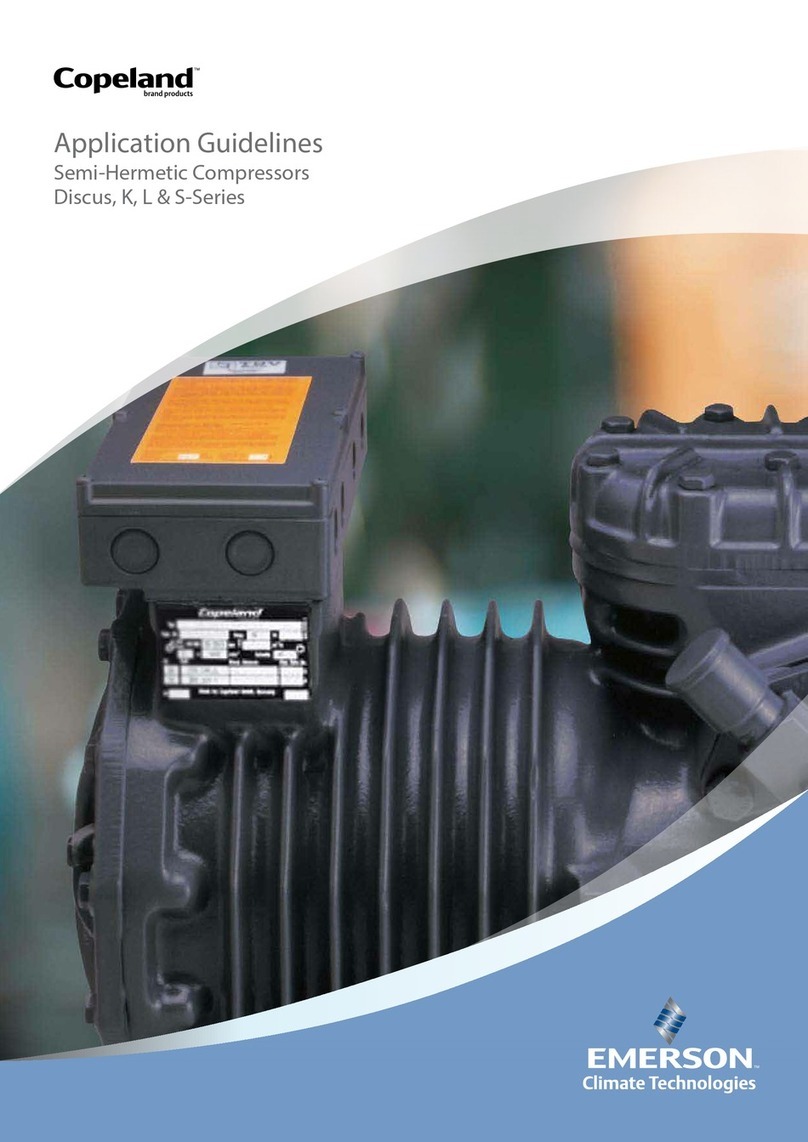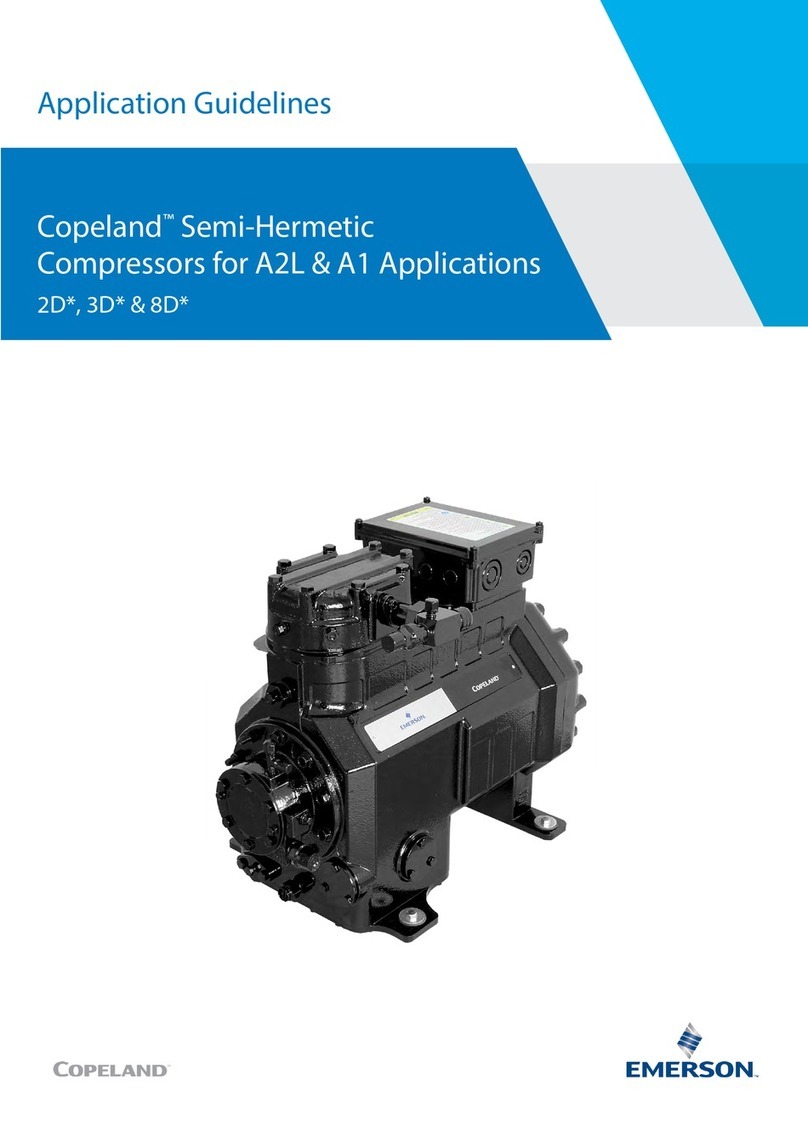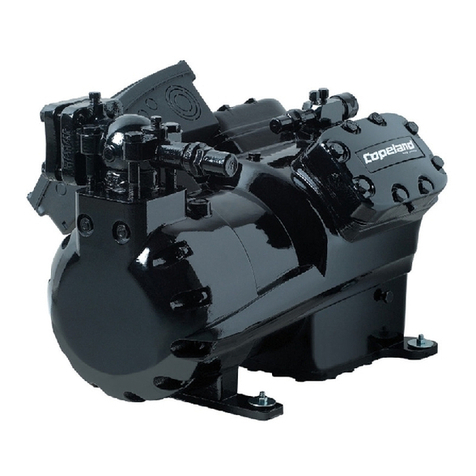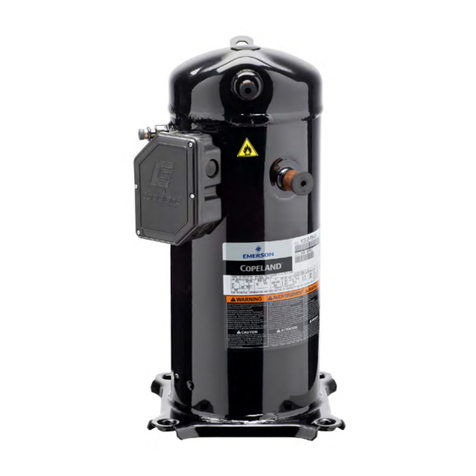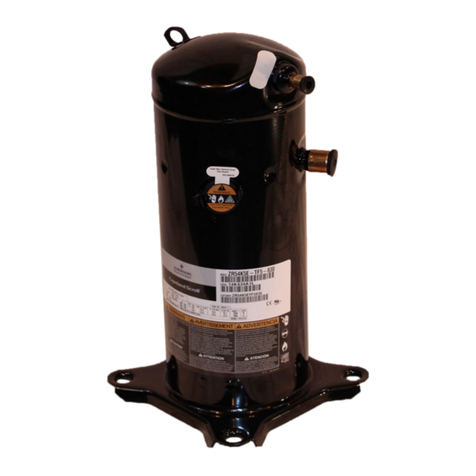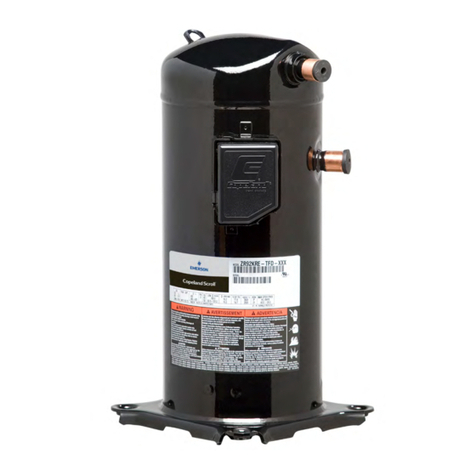
15980xxxxx - XWi70K FULL GB R1.3 24.01.2017.docx XWi70K 5/8
oFS Speed increment during deadlock condition: (1 to 10Hz) increment for compressor
velocity during any deadlock condition
CMn Continuous mode during normal mode: (n; Y) n=the compressor will be stopped
after reaching the SETPOINT. Y=the compressor will keep on running after reaching
the SETPOINT.
CME Continuous mode during energy saving mode: (n; Y) n=the compressor will be
stopped after reaching the SETPOINT. Y=the compressor will keep on running after
reaching the SETPOINT.
MnP Minimum compressor speed for lubrication control activation (valid only for
VSC): (0 to 100%) threshold value used to activate the lubrication function
tMi Compressor running time below the MnP threshold: (0 to 24h00min) interval of time
with compressor velocity below MnP before activating the lubrication function
tMA Interval of time with compressor a PMA during lubrication control: (0 to 255 sec)
interval of time with compressor velocity a PMA
A00 Number of serial controlled compressors: (0 to 2) how many variable speed
compressors controlled via serial mode. 0 = none; 1=1 VSC; 2=do not use it.
DISPLAY MENU - diS
CF Temperature measurement unit: (°C; °F) °C = Celsius; °F = Fahrenheit.
WARNING: When the measurement unit is changed the SET point and the values of
the parameters related to the temperature have to be checked and modified (if
necessary).
rES Resolution for °C: (in=1°C; dE=0.1°C) allowsdecimal point display.
rEd Remote display (P1; P2, P3, P4, SET, dtr) it selects which probe is displayed by the
controller. P1 = Thermostat probe; P2 = Second probe; P3 = Third probe; P4 = Fourth
probe, SET = set point; dtr = percentage of visualization.
dLY Temperature visualization delay: (0 to 20min00s; res. 10s) when the temperature
increases, the display is updated of 1°C or 1°F after this time.
Dtr Visualization percentage F(P1;P2): (0 to 99; 100=P1, 0=P2) if rEd=dtr it allows to set
the visualization according to the percentage of the first and second probe, as for the
following formula (dtr*(P1-P2)/100 + P2).
DEFROST MENU - dEF
EdF Defrost mode: (rtC; in; ond) rtC = realtime clock control; in = interval of time control
tdF Defrost type: (EL; in) EL = electricalheater; in = hot gas.
dFP Probe selection for defrost control: (nP; P1; P2; P3; P4) nP = no probe;
P1 =thermostat probe; P2 = Second probe; P3 =Third probe; P4 = Fourth Probe
dtE Defrost end temperature: (-55 to 50°C; -67 to 122°F) (enabled only when EdF=Pb)
sets the temperature measured by the evaporator probe, which causes the end of
defrost.
idF Interval between two consecutive defrost cycles: (0 to 120hours) determines the
interval of time between two defrost cycles.
MdF Maximum length for any defrost: (0 to 255min) when P2P = nP, (not evaporator
probe: timed defrost) it sets the defrost duration. When P2P different from nP (defrost
end based on temperature) it sets the maximum length for defrost.
dSd Start defrost delay: (0 to 99min) this is useful when different defrost start times are
necessary to avoid overloading the plant.
StC Compressor stop before activating any hot-gas defrost operation: (0 to 30 min) is
used stop the compressor when a defrost is managed for inversion (hot-gas).
dFd Displaying during defrost: (rt; it; SEt; dEF) rt = realtemperature;
it = temperature at defrost start; SEt = set point; dEF = “dEF”label.
dAd Delay for display temperature updating after any defrost: (0 to 255min) sets the
maximum time between the end of defrost and the restarting of the real room
temperature display.
Fdt Driping time: (0 to 120min) time interval between reaching defrost termination
temperature and the restoring of the control’s normal operation. This time allows the
evaporator to eliminate water drops that might have formed due to defrost.
dPo Defrost after power-on: (n; Y) n= after the idF time, Y= immediately.
dAF Delay before activating the defrost output (used only if tdF=in): (0 to StC) used to
delay the activation of the defrost output.
Syd Type of synchronized defrost: (nu; Syn; rnd) nu=not used; Syn=do not use it;
rnd=random defrost function
ndE Number of devices for random defrost (Syd=rnd): (1 to 20) used to determinate the
number of appliances with random defrost function active
VENTILATORI FAN MENU - FAn
FAP Probe selection for evaporator fan management: (nP; P1; P2; P3; P4) nP = no probe;
P1 =thermostat probe; P2 = Second probe; P3 =Third probe; P4 =Fourth probe.
FSt Evaporator fan stop temperature: (-55 to 50°C; -67 to 122°F) setting of temperature,
detected byevaporator probe, above which fans are always OFF.
HYF Differential for evaporator fan: (0.1 to 25.5 °C; 1 to 45°F) differential used for
evaporator fan regulator
FnC Evaporator fan operating mode: (C-n; o-n; C-Y; o-Y) C-n = runs with the compressor,
OFF during defrost; o-n = continuous mode, OFF during defrost; C-Y = runs with the
compressor, ON during defrost; o-Y = continuous mode, ONduring defrost.
Fnd Evaporator fan delay after any defrost: (0 to 255min) interval between end of defrost
and evaporator fans start.
FCt Temperature differential for evaporator fan activation: (0 to 59°C; 0 to 90°F) (N.B.:
FCt=0 means function disabled) if the difference of temperature between the evaporator
and the room probes is higher than FCt value, the fans will be switched on.
Ft Evaporator fan controlled during defrost: (no; Yes) no = fan stopped during defrost;
Yes = fan controlled during anydefrost
Fon Evaporator fan ON time (with compressor OFF): (0 to 15min) with Fnc=C_n or C_Y,
(fan activated in parallel with compressor) it sets the evaporator fan ON cycling time when
the compressor is off. With Fon=0 and FoF≠0 the fan are always off, with Fon=0 and
FoF=0the fan are always off.
FoF Evaporator fan OFF time (with compressor OFF): (0 to 15min)
With FnC=C_n or C_Y, (fan activated in parallel with compressor) it sets the evaporator
fan off cycling time when the compressor is off.
With Fon=0 and FoF≠0 the fan are always off, with Fon=0 and FoF=0 the fan are always
off.
FAC Probe selection for condenser fan: (nP; P1; P2; P3; P4) nP = no probe, regulator
disabled; P1 =thermostat probe; P2 = Second probe; P3 =Third probe; P4 =Fourth probe.
St2 Regulation Set Point for condenser fan: (-100 to 200 °C; -148 to 302°F) set point used
for condenser fan regulator
HY2 Differential for condenser fan: (0.1 to 25.5°C; 1 to 45°F) differential used for condenser
fan regulator
FCC Condenser fan mode operation: (C-n; o-n; C-Y; o-Y) C-n = runs with the compressor,
OFF during defrost; o-n = continuous mode, OFF during defrost; C-Y = runs with the
compressor, ON during defrost; o-Y = continuous mode, ONduring defrost
AUXILIARY MENU – AUS
ACH Kind of action for Auxiliary regulator: (CL; Ht) CL = cooling; Ht= heating
SAA Set point for auxiliary regulator: (-100 to 200 °C; -148 to 302°F) set point used for
auxiliary regulator
SHY Differential for auxiliary regulator: (0.1 to 25.5°C; 1 to 45°F) differential used for
auxiliary regulator
ArP Probe selection for auxiliary regulator: (nP; P1; P2; P3; P4) nP = no probe, regulator
disabled; P1 =thermostat probe; P2 = Second probe; P3 =Third probe; P4 =Fourth probe
Sdd Auxiliary regulator disabled during any defrost: (n; Y) n= enabled; Y =disabled
A2C Kind of action for Auxiliary regulator 2: (CL; Ht) CL = cooling; Ht= heating
SA2 Set point for auxiliary regulator 2: (-100 to 200 °C; -148 to 302°F) set point used for
auxiliary regulator 2
SH2 Differential for auxiliary regulator 2: (0.1 to 25.5°C; 1 to 45°F) differential used for
auxiliary regulator 2
Ar2 Probe selection for auxiliary regulator 2: (nP; P1; P2; P3; P4) nP = no probe, regulator
disabled; P1 = thermostat probe; P2 =Second probe; P3 =Third probe; P4 = Fourth probe
Sd2 Auxiliary regulator 2 disabled during any defrost: (n; Y) n = enabled; Y =disabled
btA Base time for parameter Ato and AtF: (Min; SEC) Min=base time is in minutes;
SEC=base time is in seconds
Ato Interval of time with auxiliary output active: 0 to 255
AtF Interval of time with auxiliary output not active: 0 to 255
1An Kind of analogue output 1: (VLt; Cur) VLt = 0-10Vdc; Cur=4-20mA
1oL Minimum value for analogue output 1 (in percentage): (0 to 100%) output value at the
beginning of the scale
1oH Maximum value for analogue output 1 (in percentage): (0 to 100%) output value at the
end of the scale
1At Start-up time with analogue output 1 at 100%: (0 to 255 sec) analogue output will be
forced at 100% for this intervalof time after anypower-on
2An Kind of analogue output 2: (VLt; Cur) VLt = 0-10Vdc; Cur=4-20mA
2oL Minimum value for analogue output 2 (in percentage): (0 to 100%) output value at the
beginning of the scale
2oH Maximum value for analogue output 2 (in percentage): (0 to 100%) output value at the
end of the scale
2At Start-up time with analogue output 2 at 100%: (0 to 255 sec) analogue output will be
forced at 100% for this intervalof time after anypower-on
DYNAMIC SET POINT – dYn
dSi Reference probe for dynamic set point function: (nP; P1; P2; P3; P4) nP = no probe,
regulator disabled; P1 = thermostat probe; P2 = Second probe; P3 =Third probe; P4 =
Fourth probe
dSS Regulation set point for dynamic set point function: (-100 to 200 °C; -148 to 302°F)
regulation set point used
dSb Regulation band for dynamic set point: (-50 to +50°C; -58 to 122°F) band of action for
dynamic set point
dSH Differential for dynamic set point: (-50 to 50°C; -100 to 100°F) differential used
ALARM MENU - ALr
ALP Temperature alarm probe selection: (nP; P1; P2; P3; P4) nP = no probe, the
temperature alarms are disabled; P1 = Probe 1 (Thermostat probe); P2 = Probe 2; P3 =
Probe 3; P4 = Fourth probe.
ALC Temperature alarms configuration: (Ab; rE) Ab = absolute temperature, alarm
temperature is given by the ALL or ALU values. rE = temperature alarms are referred to
the set point. Temperature alarm is enabled when the temperature exceeds the
[SET+ALU] or[SET-ALL] values.
ALU Maximum temperature alarm:
If ALC=Ab: [ALL to 150.0°C or ALL to 302°F]
If ALC=rE: [0.0 to 50.0°C or 0 to 90°F]
when this temperature is reached the alarm is enabled, after the ALd delay time.
ALL Minimum temperature alarm:
If ALC=Ab: [-55°C to ALU; -67 to ALU]
If ALC=rE: [0.0 to 50.0°C or 0 to 90°F]
when this temperature is reached the alarm is enabled, after the ALd delay time.
AFH Temperature alarm recovery differential: (0.1 to 25.5°C; 1 to 45°F) intervention
differentialfor recovery of temperature alarm.
ALd Temperature alarm delay: (0 to 255 min) time interval between the detection of an alarm
condition and alarm signaling.
dot Temperature alarm delay when door is open: (0 to 255 min) delay before activating the
door open alarm
dAo Temperature alarm delay at power-on: (0.0 to 24h00min, res. 10min) time interval
between the detection of the temperature alarm condition after instrument power on and
alarm signaling.
AP2 Second temperature alarm probe selection: (nP; P1; P2; P3; P4)
nP = no probe; P1 = thermostat probe; P2 = second probe; P3 = Third probe; P4 = Fourth
probe.
AL2 Second low temperature alarm: (-55 to 150°C; -67 to 302°F) when this temperature is
reached the LA2 alarm is signaled, possibly after the Ad2 delay.
Au2 Second high temperature alarm: (-55 to 150°C; -67 to 302°F) when this temperature is
reached the HA2 alarm is signaled, possibly after the Ad2 delay.
AH2 Second temperature alarm recovery differential: 0.1 to 25.5°C; 1to 45°F.
Ad2 Second temperature alarm delay: (0 to 255 min) time interval between the detection of
the condenser alarm condition and alarm signaling.
dA2 Second temperature alarm activation delay after power on: 0.0 to 24h00min, res.
10min.

